How do blogs make money? Is there a way to secure passive income with a blog?
In this guide, I teach you the three best and most passive ways to make money with a blog that I’ve used to earn thousands of dollars every month.
Without wasting any more time, let’s jump right into it.
#1 Ads
Alright, let’s start with the most straightforward way to monetize your blog: Ads.
Yes, plain old advertisements.
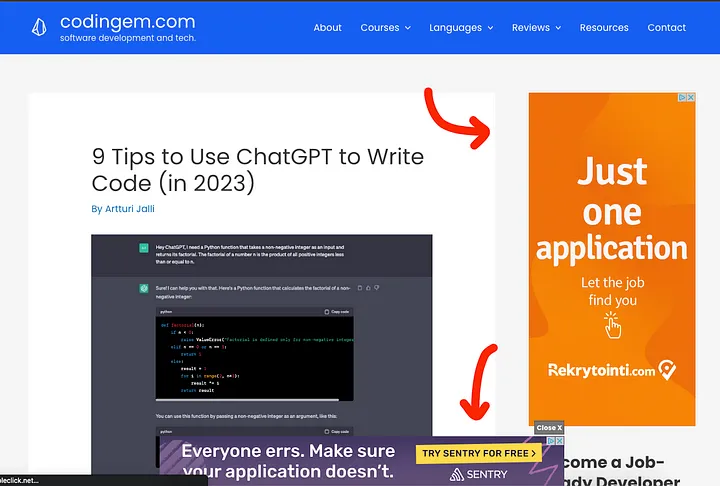
Here’s how it works:
You sign up for an ad network. Once you’re in, the network will take care of displaying ads on your site.
Sounds simple, right? That’s because it is!
You won’t have to worry about the nitty-gritty details like where to place ads or which ones to show.
It all happens magically behind the scenes.
The most widely known ad network is Google AdSense.

Getting started with AdSense is simple.
All you need is the following:
- A Google Account: You’ve probably already got this if you’re using Gmail, Google Drive, or any of their other services.
- Your own content: A blog, site, or any original content you own. Just make sure the content complies with the AdSense Program policies.
Now, let’s face it: AdSense doesn’t always pay a fortune.
Many bloggers I’ve chatted with report earnings in the ballpark of $1-$10 per 1,000 visitors.
But don’t worry! There are other ad networks out there that often perform 2–3 times better, such as Newor Media.
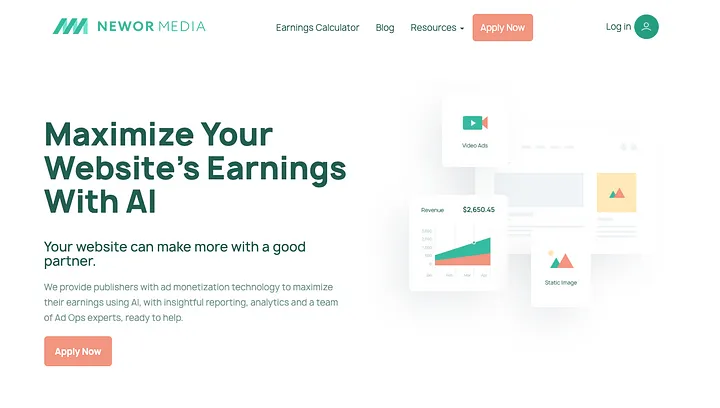
At the top of the ad network food chain, you’ll find premium networks like MediaVine and AdThrive.
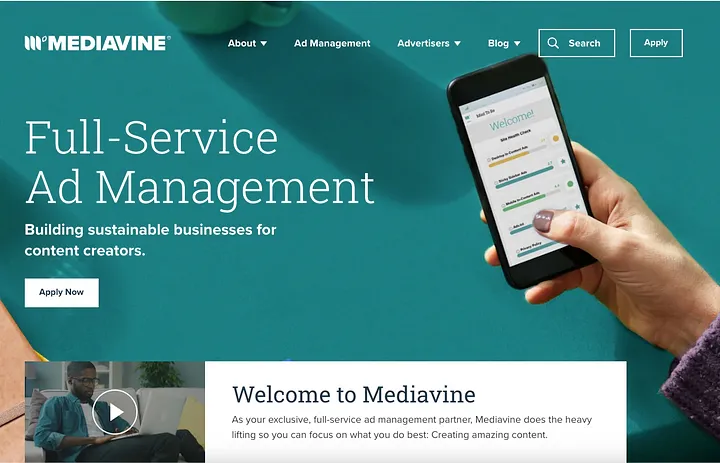
These networks typically deliver the highest revenue, but they’re also the toughest to get into.
To be even considered, your blog needs to have between 50,000–100,000 monthly visitors, most of whom should be from the US. Also, your content needs to be top-notch.
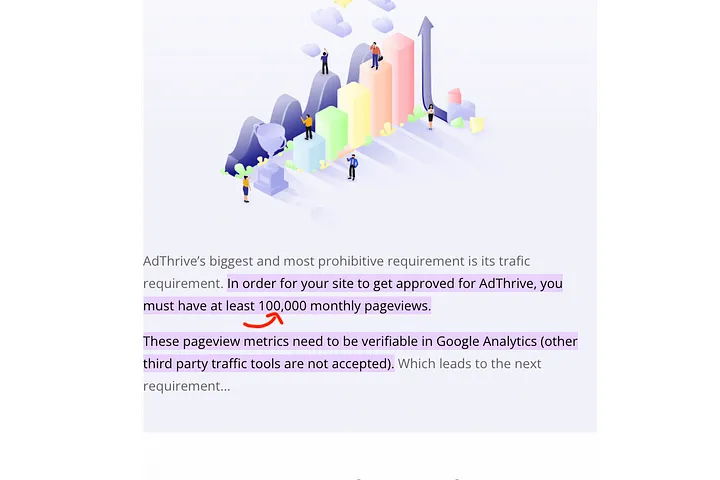
One more thing about ads: Although they are the easiest way to monetize a blog, they’re usually the worst as well.
Ads can easily perform 5–10 times worse than the other monetization strategies that I’m about to show you.
First of all, there needs to be a ton of ads on your site for them to perform.
But this breaks the UI/UX of your website.
When I first monetized my blog through ads, my friends asked if my site has been hacked….
These kinds of intrusive ads can lead to traffic drops on your site which will also mean smaller earnings.
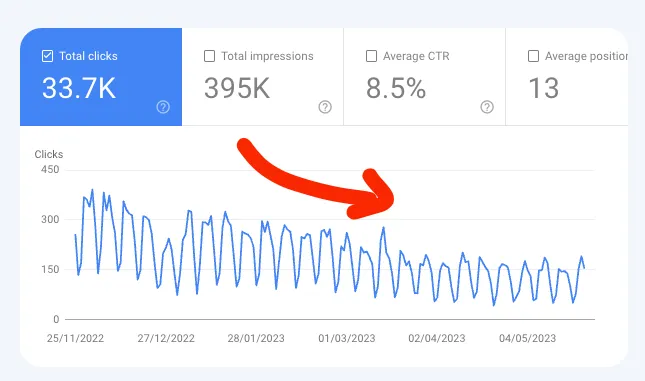
But then if you don’t display a ton of those, they won’t perform…
So keep this in mind when showing ads. I’d recommend treating them as the last resort when it comes to monetizing a blog!
#2 Affiliate Marketing
Next on our list of monetization methods is Affiliate Marketing.
I’ve got to say, this is one of my absolute favorites.
It’s straightforward, super effective, and when done right, can be a game-changer for your blogging income.
It can even rake in 10 times more money than ads!
But what exactly is affiliate marketing?
Well, it’s basically a referral system. You promote a product on your blog, your readers click your affiliate link, and if they make a purchase, you get a commission.
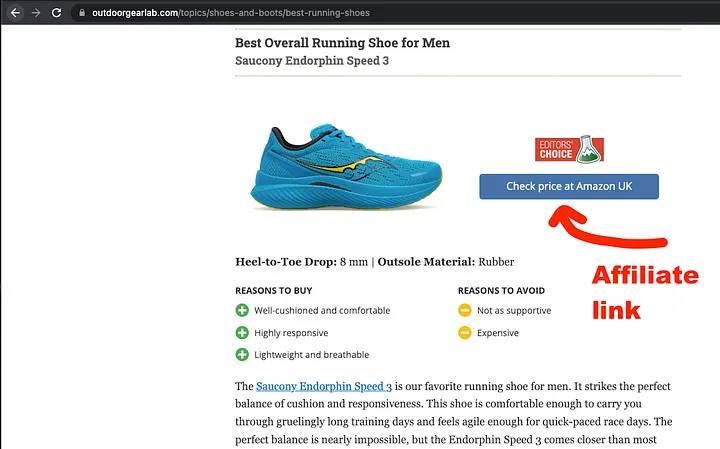
If this is your first time hearing about affiliate marketing, make sure to check my video where I explain affiliate marketing in more detail.
The key to affiliate marketing is to promote products that are relevant to your blog’s niche and truly useful to your audience.
Don’t promote VPNs on a gardening website.
Readers can sniff out an irrelevant product from a mile away, and nothing can damage your credibility faster than that.
Getting accepted into affiliate programs is usually a breeze. Just fill out a simple application form and wait.
There are affiliate networks, such as Impact, with thousands of products to promote.
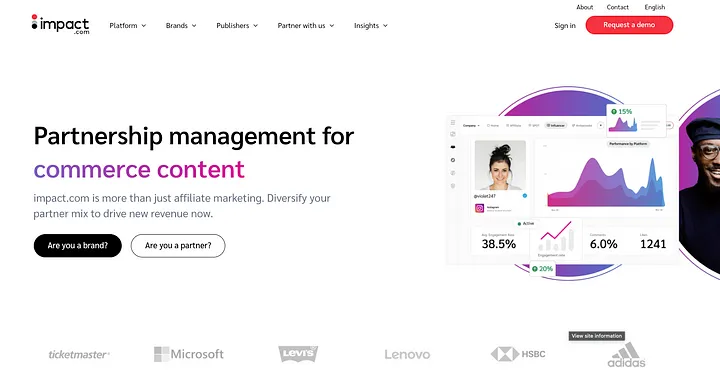
Then there are also those “direct” affiliate programs you can join on a company’s website:
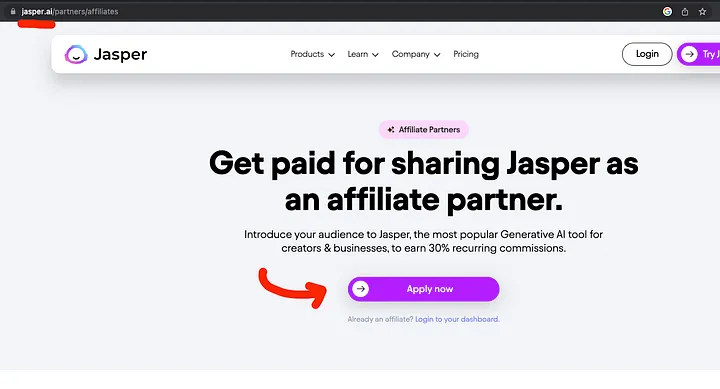
But don’t think that affiliate marketing is all sunshine and rainbows. It requires strategic and hard work on your blog.
Just randomly dropping affiliate links into your blog posts isn’t going to cut it. If you have 100,000 visitors but none of your posts are crafted to target people close to making a purchase, you won’t earn anything.
So, let’s say your blog is about running.

You could write an affiliate post on “Best Running Shoes for Winter Conditions”.
These kinds of posts are considered “transactional” and people visit these types of posts with credit cards in their hands.

#3 Info Products
Finally, let’s discuss a monetization method that’s often overlooked but can be seriously profitable:
Info Products.
Think of it this way: You’ve got a skill or a treasure trove of knowledge about your niche.
Why not package that knowledge into an info product and sell it?
This could be an eBook, a course, a webinar, or even a coaching program.
For instance, if you have a fitness blog, you could offer fitness programs that you used to get in shape.
When done right, selling info products can be just as effective as affiliate marketing, and sometimes even more so.
But there’s a catch: this method requires a good chunk of traffic — think tens or hundreds of thousands of visitors to make a meaningful number of sales.
Also, creating an info product is not a walk in the park.
First, you’ve got to validate your idea.
That means making sure there’s an actual demand for what you’re about to create.

Then comes setting up a sales funnel which is a completely different ball game.
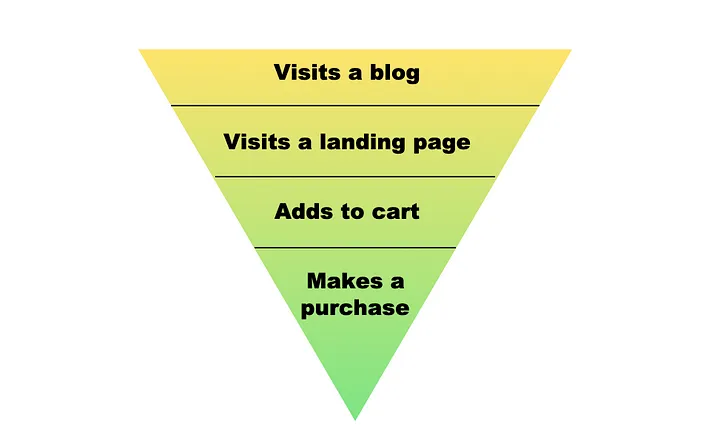
This is where you’ll collect leads, build relationships with them, and finally guide them toward making a purchase.
But, if you’re willing to put in the time and effort, it can turn out to be an incredibly rewarding revenue stream in the long run.
For example, I’ve been blogging for 2.5 years now, and I’ve only just launched my first info product, the “Blogging Launchpad” course.
Wrapping Up
And there you have it—the three best ways to monetize a blog.
Now go ahead and look around in your niche. I bet you’ll be able to identify these monetization strategies in most of your competitors’ blogs.
It’s worth mentioning, though, that these monetization strategies aren’t the only ways to make money. But these are the less work-intensive and the most passive ways.
For example, if you have affiliate posts that rank high on search results, you might make money for months or even years without doing work.
Be patient and work hard.
Thanks for reading. Happy writing!
